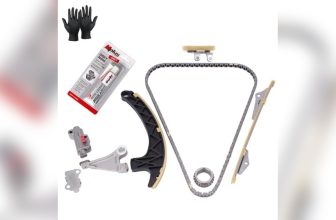
Understanding the difference between hardwoods and softwoods is essential for woodworking projects. Each type offers unique characteristics and uses.
Hardwoods and softwoods are two primary categories of wood, each with distinct features. Hardwoods, like oak and maple, come from deciduous trees and are known for durability and strength. Softwoods, such as pine and cedar, come from coniferous trees and tend to be lighter and more flexible.
These differences affect how the wood is used in furniture, flooring, and construction. Knowing these traits helps in selecting the right wood for your project. This guide will explore their characteristics, benefits, and best uses. Whether you’re crafting furniture or building a deck, understanding wood types can improve your results. Let’s dive into the world of wood.
Buying Guide On Wood Characteristics A Guide To Hardwoods Vs Softwoods
understanding wood types helps in choosing the right material. Here’s a guide:
1. Hardwoods
hardwoods come from deciduous trees. These trees shed leaves annually.
examples include oak, maple, and walnut. Hardwoods are dense and durable.
they resist wear and tear. Ideal for flooring and furniture.
also, they are less likely to dent or scratch.
2. Softwoods
softwoods originate from coniferous trees. These trees have needles and cones.
pine, cedar, and fir are common examples. Softwoods are lighter and less dense.
they are easier to work with. Suitable for construction and framing.
softwoods grow faster, making them more sustainable.
3. Key differences
hardwoods are generally more expensive. Softwoods are more affordable.
hardwoods have complex grain patterns. Softwoods have simpler grains.
hardwoods require more effort to process. Softwoods are easier to cut.
durability varies greatly between the two types. Choose based on need.
4. Applications
hardwoods are best for high-traffic areas. Softwoods are great for outdoor projects.
furniture often uses hardwoods. Softwoods are common in structural applications.
hardwoods offer aesthetic appeal. Softwoods are practical and versatile.
5. Maintenance
hardwoods need regular polishing. Softwoods require sealing and treatment.
both types benefit from proper care. Extend their lifespan with maintenance.
6. Environmental impact
softwoods are more renewable. Hardwoods take longer to mature.
choose responsibly sourced wood. Consider environmental impact in your decision.
Conclusion
Choosing the right wood is crucial for your project’s success. Hardwoods and softwoods both have unique qualities. Hardwoods, like oak and maple, are dense and durable. Ideal for furniture and flooring. Softwoods, such as pine and cedar, are light and easy to work with.
Great for construction and crafting. Each type has its own strengths and weaknesses. Consider the wood’s grain, color, and cost. Think about where and how it will be used. Both hardwoods and softwoods offer versatility and beauty. Understanding these characteristics helps in making informed decisions.
Whether building a deck or crafting a cabinet. The right wood choice adds value and longevity. Remember to assess your project needs carefully. The right choice can enhance functionality and aesthetics. Wood is a timeless material, rich in character. Explore its possibilities, and let your creativity flourish.
Your projects deserve the best. Choose wisely for lasting results.







